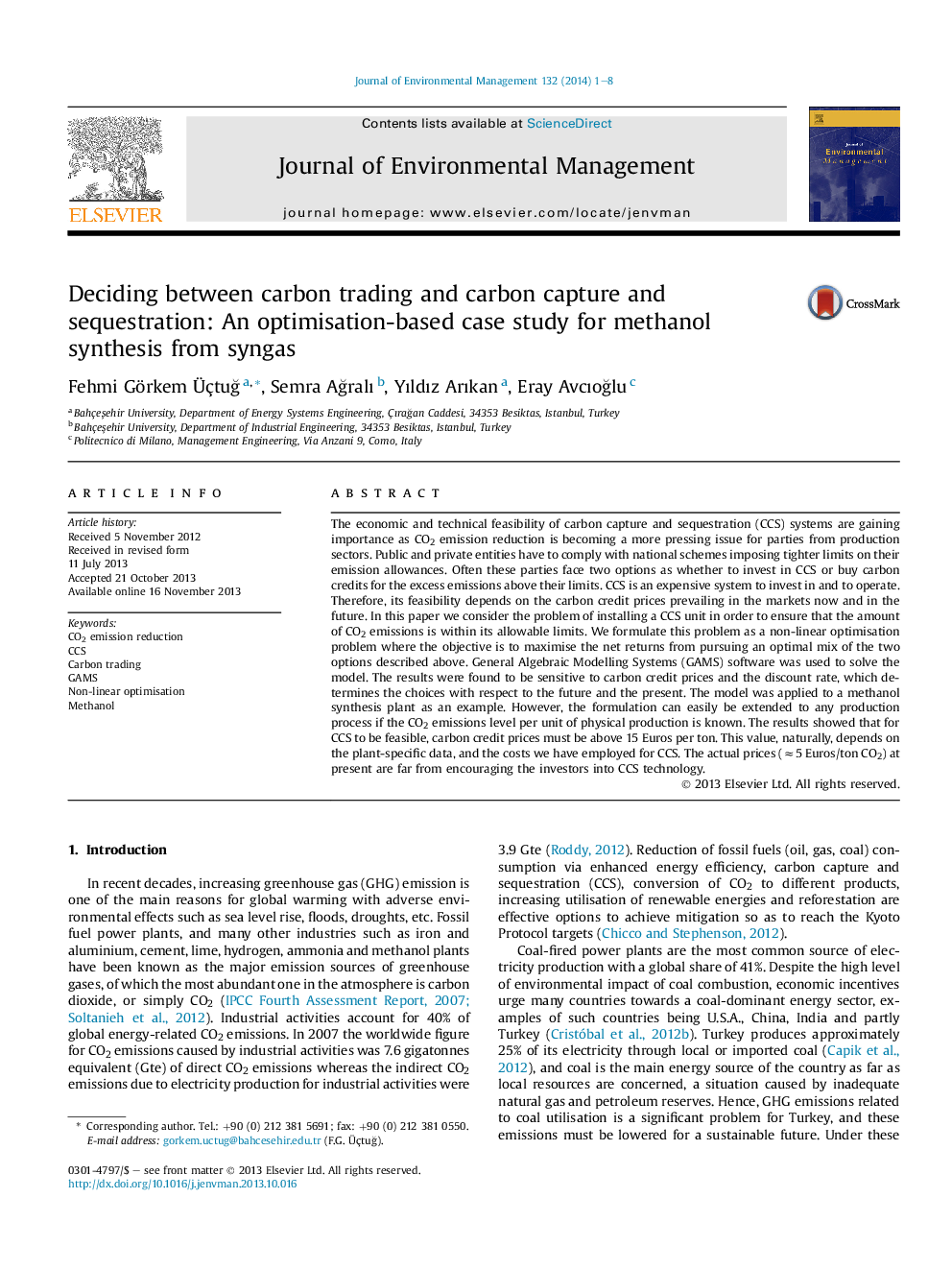| کد مقاله | کد نشریه | سال انتشار | مقاله انگلیسی | نسخه تمام متن |
|---|---|---|---|---|
| 1055774 | 1485280 | 2014 | 8 صفحه PDF | دانلود رایگان |

• Carbon capture and storage (CCS) and carbon trading were financially compared.
• Optimum annual CO2 capture amount was calculated by using GAMS software.
• Net present worth of the profits was chosen as the objective function.
• Effects of interest rate, CO2 credit price and emissions cap were investigated.
• Current high CO2 credit prices were found to render CCS infeasible.
The economic and technical feasibility of carbon capture and sequestration (CCS) systems are gaining importance as CO2 emission reduction is becoming a more pressing issue for parties from production sectors. Public and private entities have to comply with national schemes imposing tighter limits on their emission allowances. Often these parties face two options as whether to invest in CCS or buy carbon credits for the excess emissions above their limits. CCS is an expensive system to invest in and to operate. Therefore, its feasibility depends on the carbon credit prices prevailing in the markets now and in the future. In this paper we consider the problem of installing a CCS unit in order to ensure that the amount of CO2 emissions is within its allowable limits. We formulate this problem as a non-linear optimisation problem where the objective is to maximise the net returns from pursuing an optimal mix of the two options described above. General Algebraic Modelling Systems (GAMS) software was used to solve the model. The results were found to be sensitive to carbon credit prices and the discount rate, which determines the choices with respect to the future and the present. The model was applied to a methanol synthesis plant as an example. However, the formulation can easily be extended to any production process if the CO2 emissions level per unit of physical production is known. The results showed that for CCS to be feasible, carbon credit prices must be above 15 Euros per ton. This value, naturally, depends on the plant-specific data, and the costs we have employed for CCS. The actual prices (≈5 Euros/ton CO2) at present are far from encouraging the investors into CCS technology.
Journal: Journal of Environmental Management - Volume 132, January 2014, Pages 1–8